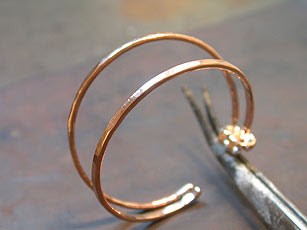On
Mocoloco, they featured some designs from the Centre de Design at the Université du Québec in Montreal's school of design's year-end exhibition. This exhibition features the final projects from grad students in the Environmental Design program.
The exhibition was entitled Poupées Russes (French for "Russian Dolls" or more commonly known as Matryoshka dolls) aiming to show the importance of layers in designs - and more broadly conceived, the interplay and interdependence on form & function; how these layers are inextricably tied to one another.

The feature is fascinating and there are a number of excellent, inspired designs. My favorite is this dinner plate by Marie-Pier Rivard. Here's a snippet from
Mocoloco about the design:
"Dinner plate for the elderly, disabled, by Marie-Pier Rivard. Taking on the task to improve the famous Manoy plate designed by Russel Manoy in the late 60s, the designer aimed to help without signaling, marking or even implying a person's disabilities: camouflage in tableware. The first step was switching the original oval design made of melamine to a more contemporary, common and elegant round ceramic dish. Though it keeps the vertically curved side wall designed by Manoy helping users pick-up difficult foods with only one hand, it now cleverly includes a slanted bottom to naturally set liquids on to one side, a groove under its rim facilitating handling, and finally an air-insulated double-wall which enables the safe manipulation of hot contents. Tutors: Patrick Evans & Katherine Lapierre."
I wasn't familiar with the Manoy plate. This is the original plate design (
from MoMA's site) as well as its modern iteration which we all know from hospital, etc (...can almost smell it!)


The newer version from Rivard has a sophistication to it that I really appreciate. It is adult and civilized while successfully addressing the needs of its user in a subtle, classy way.

















































